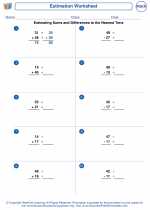Scatter Plot Explanation and Study Guide
What is a Scatter Plot?
A scatter plot is a type of mathematical diagram using Cartesian coordinates to display values for two variables for a set of data. The data is displayed as a collection of points, each having the value of one variable determining the position on the horizontal axis and the value of the other variable determining the position on the vertical axis.
Creating a Scatter Plot
To create a scatter plot, follow these steps:
- Identify the variables to be plotted on the x-axis and y-axis.
- Label the x-axis and y-axis with the appropriate variable names.
- Plot each data point with the x-value on the horizontal axis and the y-value on the vertical axis.
- Once all points are plotted, analyze the pattern of the points to determine if there is a relationship between the variables.
Interpreting a Scatter Plot
When interpreting a scatter plot, look for the following patterns and relationships:
- Positive Correlation: When the points on the scatter plot form a pattern that slopes upwards from left to right, it indicates a positive correlation between the variables.
- Negative Correlation: When the points on the scatter plot form a pattern that slopes downwards from left to right, it indicates a negative correlation between the variables.
- No Correlation: When the points on the scatter plot do not form a clear pattern or trend, it indicates no correlation between the variables.
- Strength of Correlation: The closer the points are to forming a straight line, the stronger the correlation between the variables.
Using Scatter Plots for Analysis
Scatter plots are useful for analyzing and visualizing relationships between two variables. They can help identify correlations, trends, clusters, and outliers within a dataset.
Study Guide Questions
- What is a scatter plot and how is it created?
- How do you interpret the patterns in a scatter plot?
- What are the different types of correlations that can be identified in a scatter plot?
- How can scatter plots be used for data analysis and visualization?
By understanding the concepts and principles of scatter plots, you can effectively analyze and interpret relationships between variables in a dataset.
[Scatter Plot] Related Worksheets and Study Guides:
.◂Math Worksheets and Study Guides Sixth Grade. Estimation

 Worksheet/Answer key
Worksheet/Answer key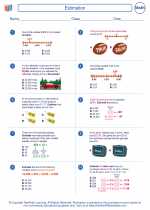
 Worksheet/Answer key
Worksheet/Answer key
 Worksheet/Answer key
Worksheet/Answer key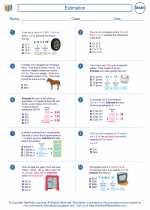
 Worksheet/Answer key
Worksheet/Answer key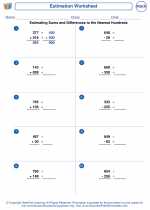
 Worksheet/Answer key
Worksheet/Answer key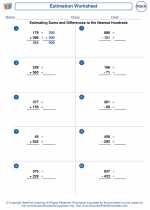
 Worksheet/Answer key
Worksheet/Answer key